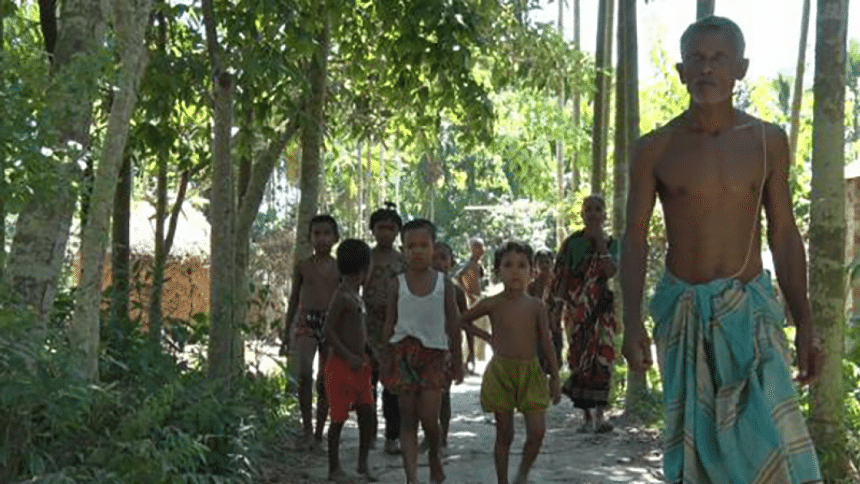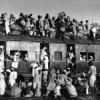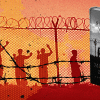From “bare lives” to “bare citizens”

The fateful line of Radcliffe, as most of us know, not only decided the border between two new states (India and Pakistan) but also sealed the fate of millions of people. A lot has been written on the partition, the hastily drawn border, the movement, and the violence that followed the partition. What the academic world as well as the media seem to have forgotten are the oddities of the partition, particularly the chhit mahals enclaves held by India and Pakistan (later Bangladesh) on each other's territory.
The residents of these enclaves lived without virtually any access to basic rights and lacked national identity. On the midnight of July 31, 2015 Bangladesh and India officially swapped control of these places, with a promise of citizenship and other rights attached to it—a rare moment in history indeed. But how are these people doing now? Has the exchange changed anything for them? And how, in the first place, did these odd territories even come into being?
For years, several myths have circulated about the formation of the enclaves including outlandish stories of late night gambling and spilled ink on a map at the time of partition. However, the enclaves actually came into existence after a treaty between the Mughals and the Maharaja of Cooch Behar in 1713. This treaty allowed both parties to retain ownership of the pieces of land they controlled at the time of the treaty even though they were surrounded by enemy territory. Later, the British-India administrators attempted to solve the issue by exchanging these pockets of land but were unsuccessful, as the enclave residents did not want it to happen.
After the partition in 1947, the states of Pakistan and India inherited these enclaves while Bangladesh inherited its share after its independence in 1971. There were 198 such enclaves of which several were counter-enclaves (enclave within an enclave) and one counter-counter-enclave (enclave within an enclave within another one). But the number is popularly known to be 162 since the counter-enclaves were not counted. The total exchangeable land areas of these enclaves were 98.5 sq km, of which Bangladesh and India respectively hosted 69.5 sq km and 29.0 sq km. During the time of the exchange, the total number of people living there was about 55,000, of which around a thousand, living inside Bangladesh, decided to move to India and accept Indian citizenship.
During his historic visit to India in 1974, Bangabandhu Sheikh Mujibur Rahman signed a treaty famously known as the Land Boundary Agreement (LBA), which promised an exchange of all enclaves except Dahagram-Angarpota as Bangladesh agreed to give up South Berubari to India. Bangladesh ratified the treaty immediately, but India was still to do so. The assassination of Sheikh Mujibur Rahman in 1975 and subsequent changes in the political scenarios of both Bangladesh and India overshadowed the importance of the exchange. It was not until 2009, after Awami League and Indian Congress Party came into power, that the exchange issue again gained pace. In 2010, Bangladesh Prime Minister Sheikh Hasina visited India and expressed her desire to solve the enclave issue in the spirit of the 1974 LBA. In 2011, a protocol was signed and finally on the midnight of July 31, 2015 all the enclaves were exchanged.
According to experts, all those years of identity crisis and statelessness turned the enclave dwellers into "bare lives." That means, they had been stripped of their civil rights, denied legal protection, and at the same time, subjected to state violence. The simultaneous denial of rights and subjection to violence compelled them to lead a life of extreme hardship and insecurity. Even a simple act such as going to the market for livelihood purposes was sometimes seen as a violation of laws and treated with punishment in the form of jail for months, even years. The enclaves virtually lived in a state of exception.
The exchange, however, came with the promise of citizenship, basic human rights and a normal life for these dwellers. But were the promises fulfilled? Did the people get what they had expected? Recent media reports and studies suggest that there were little improvements. On the Bangladeshi side, they struggle to deal with different state mechanisms; they lack resources to negotiate with local leaders and state officials. The situation is even worse for the former enclave dwellers in India. Those who stayed back in India and accepted Indian citizenship are yet to see any infrastructural development, while those who moved to India from Bangladesh have been found to be frustrated with the lack of job opportunities and other unfulfilled promises. Many of them have expressed their desire to come back.
It's no secret what happens to the marginalised people when they have to deal with the red tape and local leaders in South Asian countries, be it Bangladesh or India. With the formal status of "citizens" but no resources or negotiating power, these people risk being reduced to what some analysts have called "bare citizens". It took 68 years for these "bare lives" to become "bare citizens"; how long before they can be "citizens"?
Md Azmeary Ferdoush is a PhD candidate at the University of Hawaii at Manoa, Hawaii, the United States, and a lecturer in sociology at the University of Dhaka.










Comments